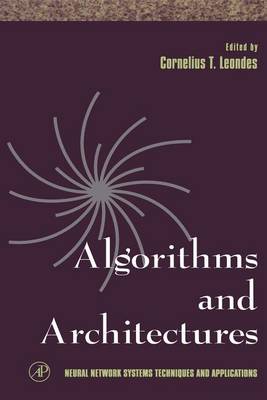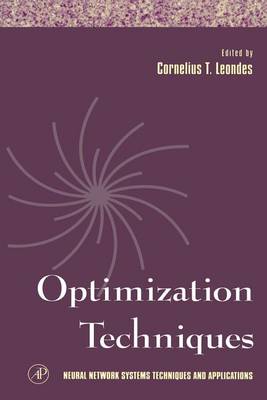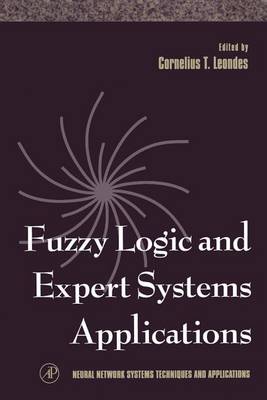Neural Network Systems Techniques and Applications
6 primary works
Book 1
This volume is the first diverse and comprehensive treatment of algorithms and architectures for the realization of neural network systems. It presents techniques and diverse methods in numerous areas of this broad subject. The book covers major neural network systems structures for achieving effective systems, and illustrates them with examples.
This volume includes Radial Basis Function networks, the Expand-and-Truncate Learning algorithm for the synthesis of Three-Layer Threshold Networks, weight initialization, fast and efficient variants of Hamming and Hopfield neural networks, discrete time synchronous multilevel neural systems with reduced VLSI demands, probabilistic design techniques, time-based techniques, techniques for reducing physical realization requirements, and applications to finite constraint problems.
A unique and comprehensive reference for a broad array of algorithms and architectures, this book will be of use to practitioners, researchers, and students in industrial, manufacturing, electrical, and mechanical engineering, as well as in computer science and engineering.
This volume includes Radial Basis Function networks, the Expand-and-Truncate Learning algorithm for the synthesis of Three-Layer Threshold Networks, weight initialization, fast and efficient variants of Hamming and Hopfield neural networks, discrete time synchronous multilevel neural systems with reduced VLSI demands, probabilistic design techniques, time-based techniques, techniques for reducing physical realization requirements, and applications to finite constraint problems.
A unique and comprehensive reference for a broad array of algorithms and architectures, this book will be of use to practitioners, researchers, and students in industrial, manufacturing, electrical, and mechanical engineering, as well as in computer science and engineering.
Book 2
Optimization Techniques is a unique reference source to a diverse array of methods for achieving optimization, and includes both systems structures and computational methods. The text devotes broad coverage toa unified view of optimal learning, orthogonal transformation techniques, sequential constructive techniques, fast back propagation algorithms, techniques for neural networks with nonstationary or dynamic outputs, applications to constraint satisfaction,optimization issues and techniques for unsupervised learning neural networks, optimum Cerebellar Model of Articulation Controller systems, a new statistical theory of optimum neural learning, and the role of the Radial Basis Function in nonlinear dynamical systems.This volume is useful for practitioners, researchers, and students in industrial, manufacturing, mechanical, electrical, and computer engineering.
Book 3
This volume covers practical and effective implementation techniques, including recurrent methods, Boltzmann machines, constructive learning with methods for the reduction of complexity in neural network systems, modular systems, associative memory, neural network design based on the concept of the Inductive Logic Unit, and a comprehensive treatment of implementations in the area of data classification. Numerous examples enhance the text. Practitioners, researchers,and students in engineering and computer science will find Implementation Techniques a comprehensive and powerful reference.
Book 4
Industrial and Manufacturing Systems serves as an in-depth guide to major applications in this focal area of interest to the engineering community. This volume emphasizes the neural network structures used to achieve practical and effective systems, and provides numerous examples. Industrial and Manufacturing Systems is a unique and comprehensive reference to diverse application methodologies and implementations by means of neural network systems. It willbe of use to practitioners, researchers, and students in industrial, manufacturing, electrical, and mechanical engineering, as well as in computer science and engineering.
Book 5
Book 6
This volume covers the integration of fuzzy logic and expert systems. A vital resource in the field, it includes techniques for applying fuzzy systems to neural networks for modeling and control, systematic design procedures for realizing fuzzy neural systems, techniques for the design of rule-based expert systems using the massively parallel processing capabilities of neural networks, the transformation of neural systems into rule-based expert systems, the characteristics and relative merits of integrating fuzzy sets, neural networks, genetic algorithms, and rough sets, and applications to system identification and control as well as nonparametric, nonlinear estimation. Practitioners, researchers, and students in industrial, manufacturing, electrical, and mechanical engineering, as well as computer scientists and engineers will appreciate this reference source to diverse application methodologies.





